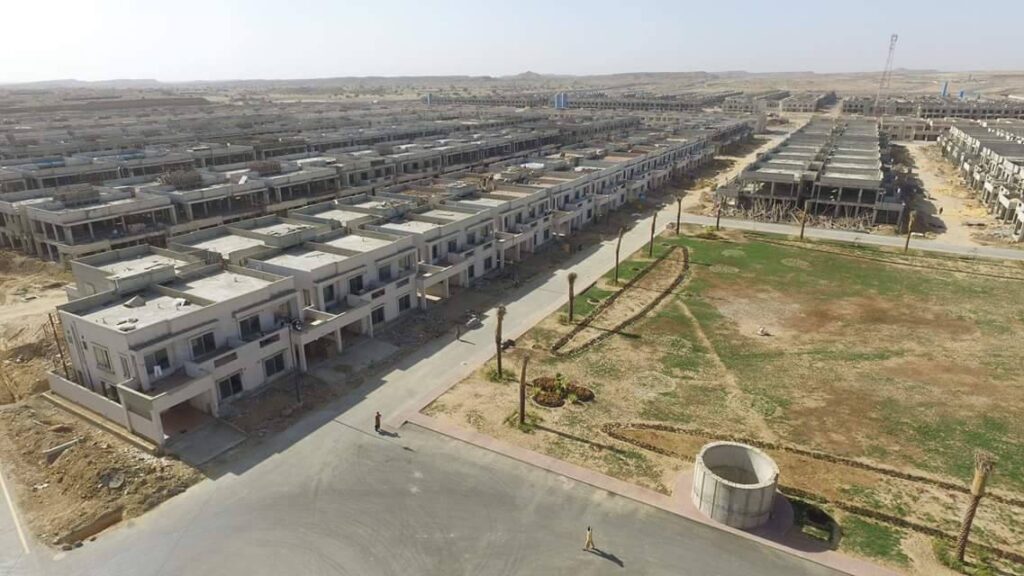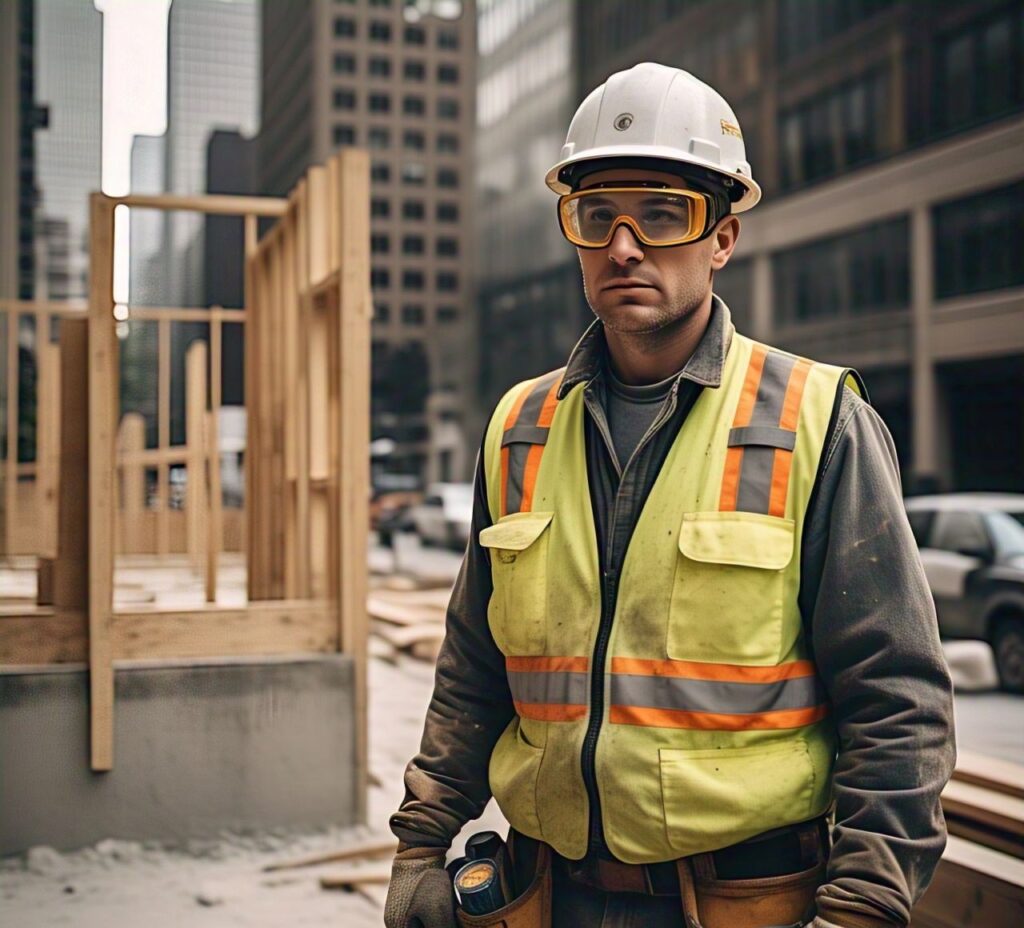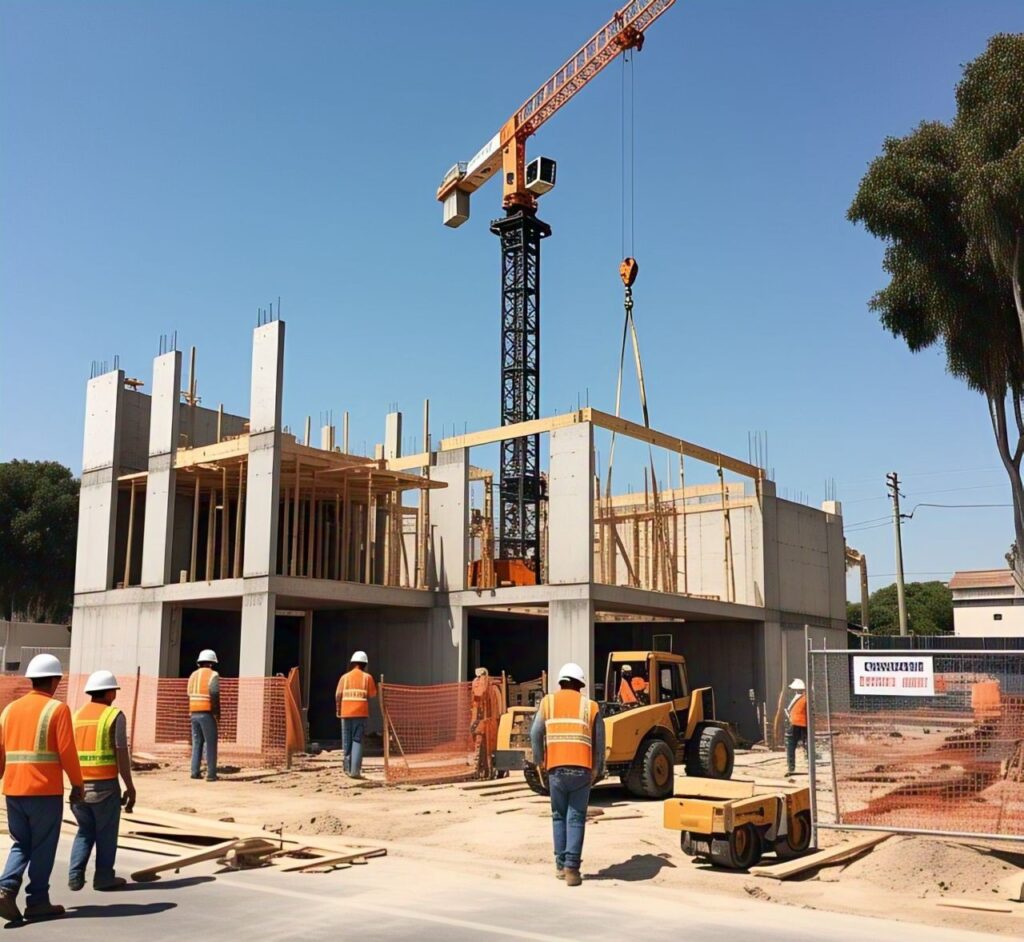Construction sites are among the most hazardous workplaces, with workers exposed to risks such as falls, electrocution, heavy machinery accidents, and exposure to hazardous materials. Ensuring safety on a construction site is not just about compliance with regulations; it is a moral obligation and a key factor in maintaining productivity and efficiency. A well-implemented safety program can significantly reduce workplace accidents, ensuring that workers return home safely each day.
This article delves into best practices for construction site safety, covering essential safety measures, risk management strategies, training programs, and advanced safety technologies.
Understanding the Risks of a Construction Site
Before implementing safety measures, it is crucial to understand the common hazards faced by construction workers. Some of the primary risks include:
- Falls from heights – Working on scaffolding, ladders, or rooftops poses a high risk of falling, which is one of the leading causes of fatalities in construction.
- Electrocution – Workers may come into contact with live wires or faulty electrical equipment, leading to serious injuries or death.
- Machinery accidents – Heavy equipment such as cranes, bulldozers, and forklifts can cause severe injuries if not operated correctly.
- Struck-by incidents – Falling objects, swinging equipment, or moving vehicles can strike workers, leading to injuries.
- Trenching and excavation hazards – Cave-ins and collapses in excavation sites are significant risks that can trap or crush workers.
- Exposure to hazardous substances – Dust, asbestos, and toxic chemicals pose long-term health risks.
Understanding these risks allows construction managers to create comprehensive safety plans tailored to specific project needs.

Implementing a Robust Safety Program
A structured safety program is the foundation of a safe construction site. Here are the key components of an effective safety program:
1. Develop a Safety Policy
A well-defined safety policy establishes the commitment of the company towards maintaining a safe workplace. This policy should include:
- The company’s approach to worker safety
- Safety responsibilities of employees and supervisors
- Procedures for reporting hazards and incidents
2. Conduct Risk Assessments
Regular risk assessments help identify potential dangers and implement preventive measures before accidents occur. A thorough risk assessment should include:
- Site inspections to identify hazards
- Analysis of past accidents and near-misses
- Evaluation of potential risks associated with specific tasks
3. Enforce Safety Training Programs
Proper training is essential to equip workers with the knowledge to handle risks effectively. Safety training programs should cover:
- General safety practices – Proper use of personal protective equipment (PPE), emergency procedures, and site rules.
- Specific job-related training – Handling hazardous materials, operating machinery, and working at heights.
- First aid and emergency response – Training on how to handle injuries, perform CPR, and use fire extinguishers.
Refresher courses should be conducted regularly to keep workers updated on safety standards.
Personal Protective Equipment (PPE)
Personal Protective Equipment is the first line of defense against workplace injuries. Employers must provide appropriate PPE and ensure that workers use it properly. Essential PPE for construction workers includes:
- Helmets – Protect against head injuries from falling objects.
- Gloves – Prevent cuts, burns, and exposure to harmful chemicals.
- Safety goggles – Shield the eyes from dust, debris, and chemicals.
- High-visibility clothing – Makes workers more visible to operators of heavy machinery.
- Steel-toe boots – Provide foot protection from heavy objects.
- Harnesses and fall protection equipment – Essential for workers operating at heights.
Regular inspections should be conducted to ensure that PPE is in good condition and replaced if damaged.
Maintaining a Safe Work Environment
A clean, organized, and hazard-free work environment significantly reduces the chances of accidents. Steps to maintain a safe construction site include:
1. Proper Housekeeping
- Keep walkways and work areas free from debris.
- Store tools and equipment in designated areas.
- Ensure waste disposal is done regularly to avoid fire hazards.
2. Secure Scaffolding and Ladders
- Inspect scaffolding and ladders before use.
- Ensure proper anchoring and stability.
- Train workers on the correct way to use ladders and scaffolding.
3. Machinery and Equipment Safety
- Conduct routine maintenance on all machinery to prevent malfunctions.
- Ensure that only trained personnel operate heavy machinery.
- Implement lockout/tagout procedures to prevent accidental machine startups.

4. Fire Safety Measures
- Install fire extinguishers at accessible locations.
- Train workers on how to use fire extinguishers effectively.
- Store flammable materials safely and away from ignition sources.
5. Clear Communication and Signage
- Use clear warning signs for hazardous areas.
- Ensure proper communication between workers, especially those operating machinery.
- Provide emergency contact information on-site.
Emergency Preparedness and Response
Despite preventive measures, emergencies can still occur. Having a well-structured emergency response plan is crucial for minimizing damage and ensuring worker safety.
1. Develop an Emergency Action Plan
A well-documented plan should include:
- Procedures for fire, medical emergencies, and natural disasters.
- Evacuation routes and assembly points.
- Contact details of emergency responders.
2. Conduct Regular Emergency Drills
Drills help workers understand emergency procedures and ensure they react promptly in real situations. These should include:
- Fire evacuation drills
- First aid response exercises
- Rescue operations for confined spaces
3. First Aid Facilities
- Ensure that fully stocked first aid kits are available at multiple locations.
- Train designated personnel in first aid procedures.
Legal Compliance and Safety Regulations
Every construction site must comply with occupational safety regulations set by local and international authorities. Some key safety standards include:
- Occupational Safety and Health Administration (OSHA) regulations – Set forth requirements for workplace safety in construction.
- National Fire Protection Association (NFPA) guidelines – Provide fire safety standards.
- Environmental Protection Agency (EPA) regulations – Ensure proper disposal of hazardous materials.
Regular audits and inspections should be conducted to maintain compliance and avoid legal penalties.
Advanced Safety Technologies
The construction industry is increasingly adopting advanced technologies to improve safety. Some innovations include:
1. Wearable Safety Devices
- Smart helmets with sensors to detect fatigue and head impacts.
- GPS-enabled vests to track worker movements in hazardous zones.
2. Drones for Site Inspections
- Help identify hazards in hard-to-reach areas.
- Improve site surveillance and security.
3. AI and Machine Learning for Risk Assessment
- Predictive analytics to identify potential safety risks.
- Automated safety reporting systems.
4. Virtual Reality (VR) Training
- Provides immersive training experiences for workers.
- Helps simulate hazardous scenarios in a safe environment.
Common Site Hazards in Construction and Methods to Avoid
Construction sites are one of the most hazardous work environments, posing risks that can lead to severe injuries or fatalities. Understanding these dangers is important for implementing effective safety measures. Many construction accidents occur due to preventable hazards such as falls, electrical shocks, heavy machinery mishaps, and exposure to harmful substances. Recognizing these risks and taking appropriate precautions can significantly reduce accidents and create a safer work environment.

1. Falls from Heights
Falls are the leading cause of fatalities on construction sites. Workers often operate at elevated positions, such as rooftops, scaffolding, or ladders, where the risk of falling is high. These incidents typically occur due to unstable working surfaces, lack of guardrails, improper use of ladders, or failure to wear fall protection gear. To prevent falls, workers must always use harnesses, install guardrails, and follow safety protocols when working at heights. Proper scaffolding setup, regular inspections, and training on ladder safety are also critical in mitigating this hazard.
2. Struck-by Hazards
Construction sites are busy with moving vehicles, falling tools, and heavy equipment in operation. Workers can be struck by objects falling from heights, swinging machinery, or moving vehicles, resulting in serious injuries. Poor visibility, unsecured materials, and lack of protective barriers increase the likelihood of these incidents. Wearing high-visibility clothing, securing loose tools, and ensuring equipment operators have clear sightlines can help reduce the risk of being struck by moving objects. Designating walkways and enforcing strict safety zones for machinery operation can further enhance site safety.
3. Electrical Hazards
Electrocution is another major hazard, especially in sites where electrical work is involved. Contact with live wires, faulty equipment, and wet conditions can lead to severe shocks or fatalities. Exposed wiring, improper grounding, and failure to follow lockout/tagout procedures significantly increase the danger. Workers should always use insulated tools, maintain a safe distance from power lines, and ensure that electrical systems are properly installed and maintained. Training on electrical safety and the use of personal protective equipment (PPE) such as rubber gloves and boots can further minimize risks.
4. Caught-in or Caught-between Accidents
These accidents occur when workers get trapped between heavy machinery, collapsing structures, or trenches. They are often caused by moving parts of machinery, unstable trenches, or working in confined spaces without proper precautions. Proper safety measures, such as using machine guards, securing trench walls, and ensuring clear escape routes, can prevent these incidents. Employers must enforce strict protocols for operating heavy equipment and ensure workers are trained to recognize and avoid situations where they could be caught or crushed.
5. Trenching and Excavation Dangers
Working in trenches presents a high risk of cave-ins, falling materials, and exposure to toxic gases. Unprotected trenches can collapse without warning, trapping workers beneath heavy soil. The absence of proper trench support systems, failure to inspect trenches regularly, and poor emergency preparedness contribute to these dangers. Using protective systems such as shoring, shielding, and sloping techniques can prevent collapses. Regular site inspections and providing workers with emergency escape ladders are crucial in ensuring trench safety.
6. Slips, Trips, and Falls
Uneven terrain, wet surfaces, and scattered debris make construction sites prone to slips, trips, and falls. Workers may trip over loose cables, slip on spilled liquids, or fall due to poor lighting. These incidents can cause fractures, head injuries, or even fatalities if they occur near dangerous machinery or high surfaces. Keeping the site clean, maintaining proper drainage, and using non-slip footwear can help prevent these accidents. Clearly marking hazardous areas and ensuring adequate lighting in dimly lit sections of the site further enhances worker safety.
7. Scaffolding and Ladder Safety Issues
Improperly erected scaffolding or ladders can lead to deadly falls. Scaffolds must be stable, fully secured, and inspected regularly to ensure their integrity. Overloading scaffolds, using damaged ladders, or failing to secure them properly increases the chances of accidents. Workers should always check ladders for defects before use, maintain three points of contact when climbing, and ensure scaffolding is set up on a solid foundation. Enforcing strict safety guidelines for working on scaffolds and providing proper training can significantly reduce fall-related injuries.
8. Exposure to Hazardous Materials
Construction sites often contain hazardous substances like asbestos, lead, silica dust, and chemicals that can cause serious health issues. Prolonged exposure to these materials can lead to respiratory diseases, skin irritation, and long-term illnesses such as cancer. Workers handling hazardous substances must use appropriate PPE, including masks, gloves, and protective clothing. Proper ventilation, dust suppression methods, and regular health screenings can also help minimize exposure. Employers should implement strict protocols for handling and disposing of toxic materials to ensure a safe working environment.
9. Fire and Explosion Risks
Flammable materials, electrical wiring, and fuel sources present significant fire and explosion hazards. Poor storage of combustible materials, electrical faults, and welding near flammable substances can lead to catastrophic incidents. Workers must be trained in fire safety, including how to use fire extinguishers and identify potential ignition sources. Keeping fire extinguishers readily available, enforcing proper storage of flammable liquids, and ensuring electrical systems are installed correctly can greatly reduce fire risks. Conducting regular fire drills and establishing clear evacuation procedures further improve site safety.
10. Heavy Equipment Accidents
Cranes, bulldozers, forklifts, and other heavy machinery can cause severe injuries if not operated correctly. Many accidents occur due to untrained operators, lack of communication, or mechanical failures. Workers must be properly trained before using heavy equipment, and regular maintenance checks should be conducted to ensure machinery functions correctly. Establishing clear communication signals between workers and operators, using spotters to guide equipment movements, and keeping unauthorized personnel away from operating zones are essential safety measures.
11. Noise-Induced Hearing Loss
Construction sites generate high noise levels from machinery, drilling, and heavy equipment, which can lead to permanent hearing damage over time. Workers exposed to excessive noise without proper protection may suffer from hearing loss or tinnitus. The use of earplugs or noise-canceling earmuffs can help reduce the impact of loud environments. Employers should conduct regular noise assessments and implement measures such as installing noise barriers, limiting exposure times, and maintaining equipment to reduce noise pollution.
12. Manual Handling and Ergonomic Injuries
Lifting heavy materials, repetitive movements, and working in awkward positions can cause musculoskeletal injuries. Workers often suffer from back pain, joint strain, and repetitive stress injuries due to improper lifting techniques or prolonged physical labor. Training workers on safe lifting practices, encouraging job rotation to minimize repetitive strain, and using mechanical aids such as hoists and forklifts can prevent these injuries. Providing ergonomic workstations and promoting good posture further helps in reducing strain-related injuries.
Final Words
Ensuring safety on a construction site requires a combination of proper planning, rigorous training, the right equipment, and advanced technology. By understanding risks, implementing safety protocols, and fostering a culture of safety, construction companies can significantly reduce workplace accidents.
A proactive approach to safety not only protects workers but also enhances productivity, minimizes delays, and builds a positive reputation in the industry. Making safety a top priority is not just a legal requirement—it is a responsibility that every construction company must embrace.

